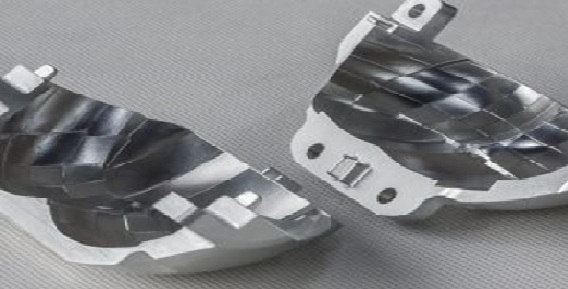A few tried and tested tips to improve your CNC work.
There is a certain sense of accomplishment and profound personal ingenuity that is felt when one takes an ordinary piece of material (plastic, wood, or aluminum in this case) and turns that material into something of use – that can provide aesthetic or functional utility.
Aluminum exists today as one of the preferred metals for use in the manufacture of consumer electronics, computer equipment, aerospace parts, utensils, and automotive parts. Since its discovery, more use cases have been unearthed as part of a growing list of products and parts that can be made using aluminum.
Aluminum machining by definition, is a set of processes that include various techniques aimed at the subtractive removal of metal from a metal block until a desired end products is achieved. Basically, the aluminum sheet or block is drilled, shaved, and shaped until the intended finished product manifests.
The definition sounds simple enough but in practice, the skill and craftsmanship that go into aluminum machining are simply astounding. You see, modern aluminum machining relies primarily on a set of computer-controlled set of processes that are broadly termed CNC machining. In its full form, the acronym stands for Computer Numerical Controlled Machining.
With CNC machining, skilled workers key in a set of instructions into a central computer system. These instructions govern the movements and technique of the machines that directly work on the aluminum. Usually, with aluminum CNC machining, the workers almost never have to physically touch the work material until work is finished on it. CNC machining is excellent both for aluminum prototyping as well as finished product manufacturing.
Our automated 21st century world has certainly made life easier and fuller, but as with many other things, CNC is a high technical aptitude field. There are many nuances, techniques, and procedures that need to be mastered before one becomes a savvy aluminum machinist.
To that end, we are going to go through a few tips to help anyone – from a complete beginner to an already familiar enthusiast – become more familiar with the field of CNC machining. Hopefully, by the end of this article, you’ll go from being a complete CNC beginner to a semi-pro (hopefully).

We are going to take the list in the increasing order of difficulty. SO here goes:
- Make sure your stock is secure: Aluminum blocks that serve as the work material have to be tightly secured to the vice. Any careless movement and the entire machining process, especially processes like fine drilling and shaping, could end up getting ruined
- March the right speeds: Especially with home projects that usually aren’t done in a more professional environment, it is important to ensure that your machines are calibrated to the right feed speeds. Usually, these speeds are specified in the user manual for most scenarios.
- Coat the right way: Tool coatings are crucial to the success of every CNC project as well as the durability of your work machines. Whether at a professional, large scale CNC shop or a small business, various CNC jobs require different coating materials. Some of these materials include Zirconium Nitrides, Chrome Nitrides, and even Diamond (for those that can afford it).
- Always double-check your CNC models: Even before the very first cut, always make sure that your design models are crisp and error-free. Sometimes, the smallest mistake can prove catastrophic to a project.
- Use the right coolant: CNC machining releases heat that can be detrimental to the equipment. Always get the right kind and amounts of coolant for every project so that your equipment stays sharp and lasts long.
Always Use the right machining strategies
With things like this, strategy is important. Professionals that have spent years in the field are purveyors of gainful industry knowledge that beginners can use on their projects. According to professional site makeitfrommetal.com:
“For most applications when milling aluminum, I’ve had the most success with old-fashioned aggression for getting good material rates. Things like peel milling is a waste of time the large majority of the time, except for when you’re working with very small cutters in cramped geometry.
The main reason for this is that the machines often can’t keep up with the extremely high accels and decels required to really take advantage of chip thinning when peel milling. You can’t have a 1,000-lb table turn on a dime at 1,200 IPM.
Ok, maybe a dime is a bad expression here. Dimes are huge. But you get the point.
Using traditional parameters like full width and 1/2xD depth of cuts generally work better in real life when cutting aluminum.”
In conclusion, there are a variety of fun things to do with aluminum machining even if you’re not looking to manufacture spark plugs for car companies. With the resources available nowadays, literally anyone can get in – and you should too.












